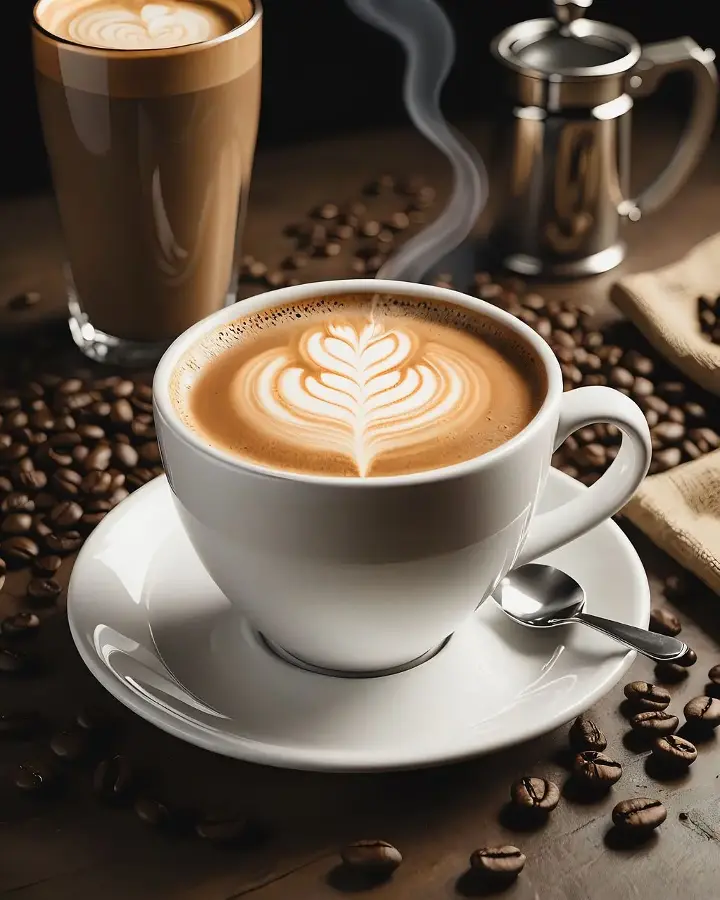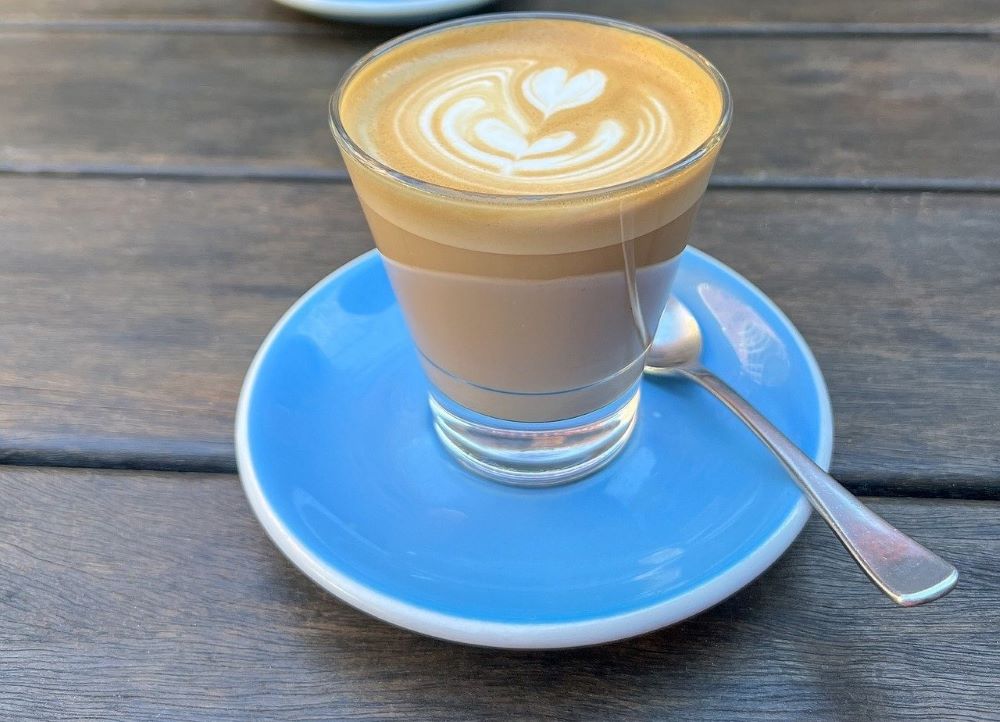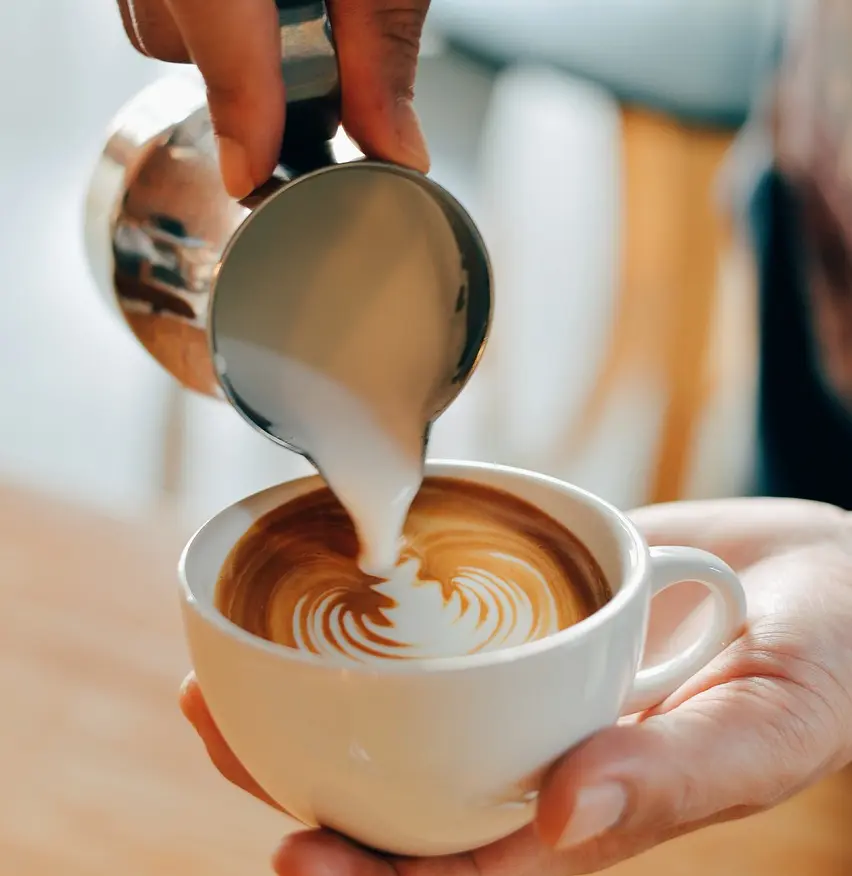Are you a coffee enthusiast who loves espresso-based drinks but can't decide between a cappuccino and a latte? These two iconic Italian beverages share similar ingredients but deliver completely different experiences.
In this guide, we'll break down the key differences, origins, and flavor profiles of cappuccinos and lattes, helping you decide which suits your taste buds best. Plus, we'll share tips on the best beans to elevate your at-home coffee game.
Which is Stronger: a Latte or a Cappuccino?
Due to a higher espresso-to-milk ratio, the cappuccino has a more concentrated espresso flavor, giving it a more robust taste than a latte.
A typical cappuccino includes a single shot of espresso topped with equal steamed milk and milk foam. This balance creates a rich, bold flavor with a creamy top layer.
On the other hand, a latte is often referred to as the "big brother" of the cappuccino due to its larger size and milkier composition. A standard latte recipe features a single espresso topped with steamed milk, creating a smoother, subtler flavor and making the espresso less intense.
The primary difference between these two beloved beverages lies in the coffee-to-milk ratio.
Cappuccino | A cappuccino usually has a 1:1:1 ratio of espresso, steamed milk, and foam. |
Latte | A latte typically follows a 1:3 ratio of espresso to steamed milk. |

What Is the Origin of Lattes vs. Cappuccinos?
The cappuccino and latte have roots in Italian coffee culture, and each has evolved into iconic drinks worldwide.
Cappuccino Origins
The cappuccino traces its origins back to the late 18th century in Italy, just after the invention of espresso machines. Traditionally, cappuccinos were a morning beverage, with Italians appreciating the bold espresso paired with a light, frothy foam. The drink's name is said to be inspired by the Capuchin monks, whose brown robes resembled the coffee's color and the foamy top.
Latte Origins
Italians were used to the bold taste of espresso and milk in coffee, but many American travelers to Italy found it a bit too intense. Therefore, Italian coffee houses began adding extra milk to soften the bitterness, creating the latte.
By the 1950s, as milk-based coffee drinks gained popularity in the United States, the latte quickly became a favorite. The term "latte" is a shortened form of caffè latte, which means "milk coffee" in Italian.
Today, the latte has evolved beyond its original espresso and steamed milk recipe. For a customized touch, many coffee lovers personalize their lattes with syrups, spices, and flavorings like vanilla, caramel, or pumpkin spice.

Why is Cappuccino So Tasty? The Secret to a Good Cappuccino
The key to a good cappuccino is the espresso's quality, the milk's temperature, and the barista's technique.
For the best cappuccino experience, use fresh whole milk. It produces a rich, stable foam that enhances the drink's overall texture and appearance.
A skilled barista will masterfully froth the milk to create a dense, creamy foam atop the espresso, offering a delightful, almost dessert-like experience with each sip.

Right Coffee Beans for Cappuccinos and Lattes
Here are some recommendations for selecting the best beans:
Arabica Beans for a Balanced Flavor
For both cappuccinos and lattes, we recommend using 100% Arabica beans. Arabica beans have a naturally sweeter and more complex flavor profile than Robusta beans, which are more bitter. The subtler flavors of Arabica beans allow them to blend seamlessly with milk, enhancing the balance between the espresso and the creamy texture.
Opt for Dark Roasts for Cappuccinos
The best coffee beans for making a cappuccino are typically dark roasts. The bold flavors of dark-roasted beans cut through the milk and foam, preserving the rich espresso taste while balancing with the milk.
If you're looking for premium quality, Solai Coffee's Whole Beans and Solai Coffee Ground Coffee offer a selection of dark-roasted Arabica beans, perfect for crafting rich cappuccinos and lattes at home. Their bold yet balanced flavors enhance the classic taste you expect in Italian-inspired espresso drinks.
How to Store Your Coffee
Always store your coffee beans or grounds in an airtight container to preserve freshness. Coffee is highly susceptible to moisture, light, and air, which can degrade the flavor over time.
Cappuccino vs Latte:What's the difference?